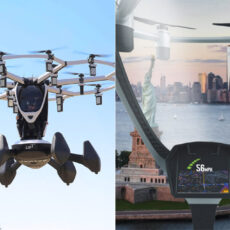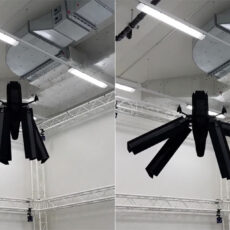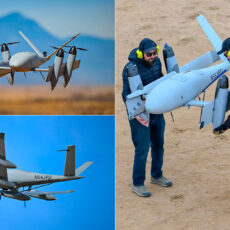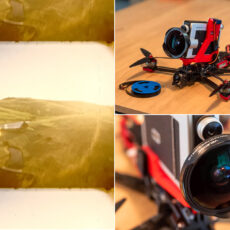
MIT’s tailsitter drone, which is basically a fixed-wing aircraft capable of taking off and landing vertically from a sitting position, can execute challenging maneuvers using newly developed algorithms for trajectory planning. These maneuvers include sideways or upside-down flight, loops, rolls, climbing turns, and even speeding through aerial gates, all planned in real-time.
Future iterations of the algorithms could enable tailsitters to autonomously perform complex moves in dynamic environments, like flying into a collapsed building and avoiding obstacles while on a rapid search for survivors. The key step in trajectory generation is to ensure the aircraft can fly the planned route, and achieving this requires employing differential flatness, or a mathematical function to check if it’s feasible.
- 𝗟𝗶𝗴𝗵𝘁𝘄𝗲𝗶𝗴𝗵𝘁 𝗮𝗻𝗱 𝗣𝗼𝗿𝘁𝗮𝗯𝗹𝗲 - The drone is lightweight and compact, weighing...
- 𝗡𝗼 𝗥𝗲𝗴𝗶𝘀𝘁𝗿𝗮𝘁𝗶𝗼𝗻 𝗡𝗲𝗲𝗱𝗲𝗱 - Under 249 g, FAA Registration and Remote ID are not required if...
- 𝗘𝘅𝘁𝗲𝗻𝗱𝗲𝗱 𝗙𝗹𝗶𝗴𝗵𝘁 𝗧𝗶𝗺𝗲 - Enjoy longer flights with DJI Mini 2 SE, which offers a 31-min max flight...


We wanted to really exploit all the power the system has. These aircraft, even if they are very small, are quite powerful and capable of exciting acrobatic maneuvers. With our approach, using one model, we can cover the entire flight envelope — all the conditions in which the vehicle can fly,” said Ezra Tal, a research scientist in the Laboratory for Information and Decision Systems (LIDS).













